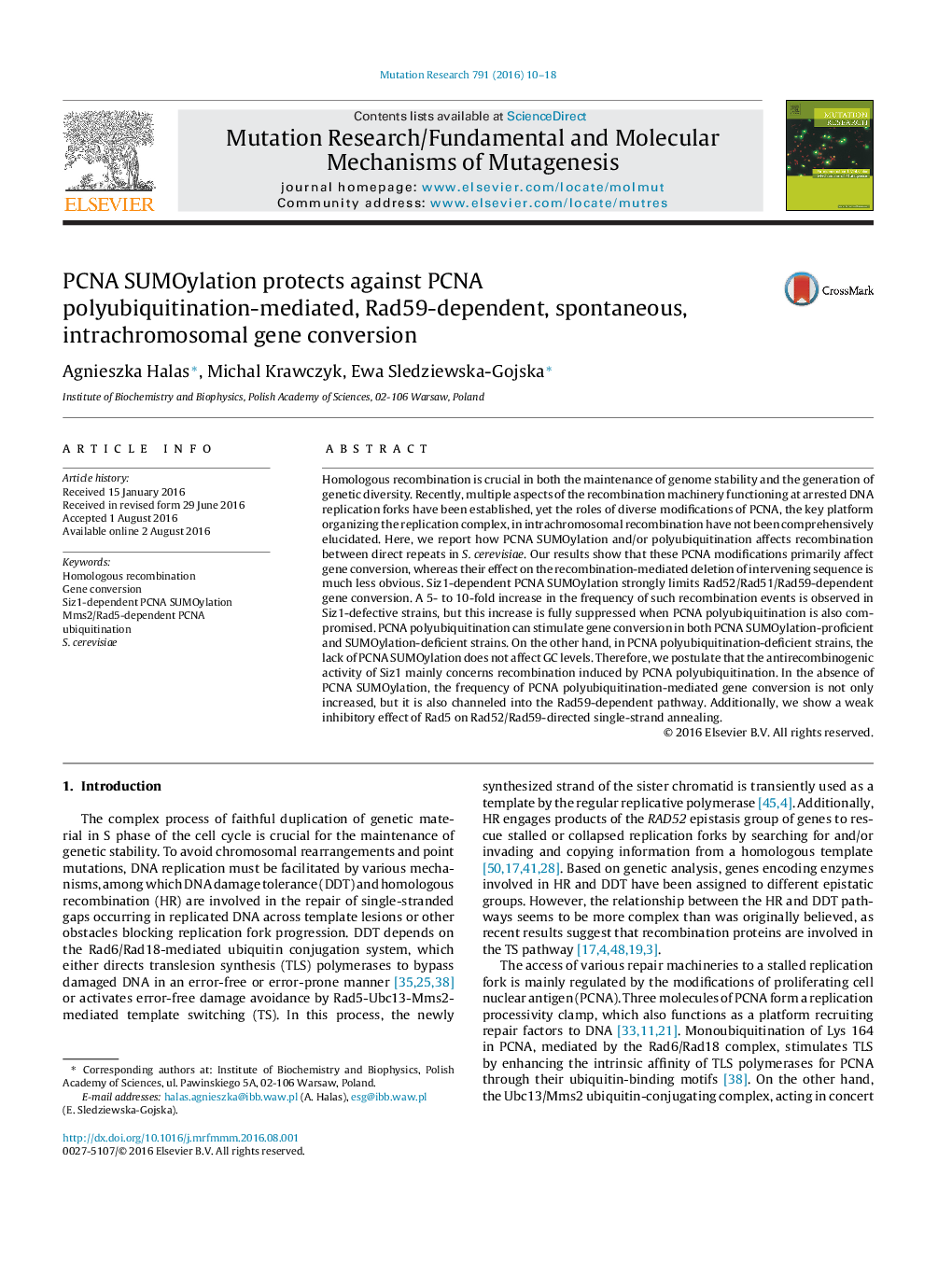| Article ID | Journal | Published Year | Pages | File Type |
|---|---|---|---|---|
| 2146096 | Mutation Research/Fundamental and Molecular Mechanisms of Mutagenesis | 2016 | 9 Pages |
•PCNA polyubiquitination stimulates spontaneous intrachromosomal gene conversion.•Siz1 activity (responsible for PCNA SUMOylation) specifically limits PCNA polyubiquitination-induced recombination.•PCNA SUMOylation channels gene conversion into a RAD59-independent pathway.•Rad5, independently of its role in PCNA polyubiquitination, inhibits single strand annealing between direct repeats.
Homologous recombination is crucial in both the maintenance of genome stability and the generation of genetic diversity. Recently, multiple aspects of the recombination machinery functioning at arrested DNA replication forks have been established, yet the roles of diverse modifications of PCNA, the key platform organizing the replication complex, in intrachromosomal recombination have not been comprehensively elucidated. Here, we report how PCNA SUMOylation and/or polyubiquitination affects recombination between direct repeats in S. cerevisiae. Our results show that these PCNA modifications primarily affect gene conversion, whereas their effect on the recombination-mediated deletion of intervening sequence is much less obvious. Siz1-dependent PCNA SUMOylation strongly limits Rad52/Rad51/Rad59-dependent gene conversion. A 5- to 10-fold increase in the frequency of such recombination events is observed in Siz1-defective strains, but this increase is fully suppressed when PCNA polyubiquitination is also compromised. PCNA polyubiquitination can stimulate gene conversion in both PCNA SUMOylation-proficient and SUMOylation-deficient strains. On the other hand, in PCNA polyubiquitination-deficient strains, the lack of PCNA SUMOylation does not affect GC levels. Therefore, we postulate that the antirecombinogenic activity of Siz1 mainly concerns recombination induced by PCNA polyubiquitination. In the absence of PCNA SUMOylation, the frequency of PCNA polyubiquitination-mediated gene conversion is not only increased, but it is also channeled into the Rad59-dependent pathway. Additionally, we show a weak inhibitory effect of Rad5 on Rad52/Rad59-directed single-strand annealing.
